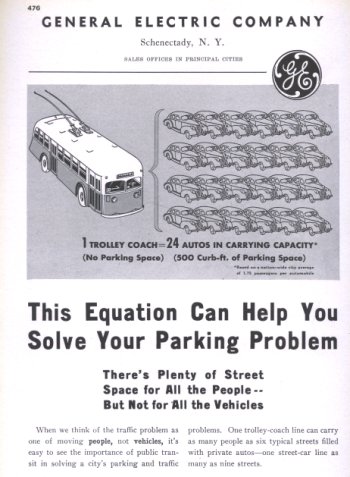Another indicator that national mathematical skills have degraded
Today's USA Today has a cover story on parking, "Need a parking place? Good luck." (Of course, in March 2005, they had a story on Professor Donald Shoup's book The High Cost of Free Parking too. See this blog entry for the links and discussion.)
The first thing I thought was that people don't understand the concept of limits. Even though the article states the problem very succinctly:
They are the victims of a growing national parking crunch, the product of ever-increasing numbers of cars and scarcer places to put them in many cities. In the past four decades, the number of registered vehicles has risen nearly 170% and the ranks of licensed drivers have doubled, Federal Highway Administration figures show...
A San Francisco company, Spark Parking, is creating a cellphone payment system for garages. Instead of barriers and ticket machines, a parking structure would be open. Motorists would drive directly to an open space. A sensor in the stall would keep track of how long they parked and bill them, says CEO Cooper Marcus. The system will help give planners a better picture of how lots and structures are used, helpful in setting parking rates.
For every car, three spaces. Higher rates might actually help consumers, he says, by creating more turnover of spaces. "If pizza was free, everyone would eat lots of pizza. If parking is free, everyone is going to use lots of parking," Marcus says.
Parking consumes enormous amounts of space. "Every car needs three spaces: one at home; one at work; and one at play," says Steve Shannon, president of ParkingMan, a consultancy in Pitman, N.J. "It's difficult to accommodate all these cars."
You can't add more space to physically limited places.
As the General Electric transit division made very clear in an ad from the 1940s, transit gets people around without requiring any parking places at all.

Ironically, we know that walking around is more healthy than driving around and eating items from fast food drive ins. Active living happens without having to join a gym in urban places. Also see this piece, "Park Your Car and Walk to Store, School, Work: New SLU Research Paints Portrait of How Active Communities Look," from St. Louis University, reporting on research published in the American Journal of Preventive Medicine. Among the significant factors:
• Land use: A mix of commercial and residential development in a community increases a person's desire to be more active. Hiking and biking trails and crosswalks do work to promote walking and bike use.
• Transportation: Sidewalks and mass transit support physical activity because they get people out of cars and encourage a more active lifestyle.
• Aesthetics: Monuments and historic attractions also encourage people to move about. In addition people are more inclined to walk in communities that are well maintained and have pleasant things to see.
• Institutional and organizational policies: Encouraging physical education programs at schools, flextime on the job, and having showers and gyms in the workplace promote an active lifestyle.
• Promotions: Campaigns and media messages build awareness of the importance of seizing opportunities for activity, which increases movement.
• Public policies: Appropriating highway funds to create bike lanes and city funds to improve parks and recreation facilities give the necessary financial muscle to build an activity-friendly infrastructure.
• Travel patterns: People are more likely to bike or take mass transit to work when they see other people doing the same thing.
Index Keywords: parking; car-culture; urban-design-placemaking



1 Comments:
Thank for sharing this article concerning mathematical skills having superb explanation & it's too clear to understand the concept as well. I am hoping the same best work from you in the future.
Post a Comment
<< Home